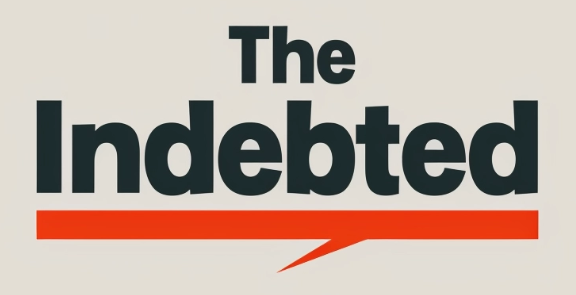If you’re struggling with debt, you’re not alone. According to a recent study, the average American has over $38,000 in personal debt. If you’re looking for a way to pay off your debt faster and more efficiently, you might be considering the snowball or avalanche method. But which one is right for you? In this article, I’ll break down the differences between the two methods and help you decide which strategy is best for your situation.
The snowball method involves paying off your debts in order of smallest to largest balance, regardless of interest rates. This method can be motivating because you’ll see progress quickly as you pay off small debts. On the other hand, the avalanche method involves paying off debts in order of highest to lowest interest rate, regardless of balance. This method can save you more money in the long run because you’ll pay less in interest. However, it can be demotivating because it may take longer to see progress as you tackle larger debts with higher interest rates.
Understanding Debt and Interest
Debt is a common financial issue that can have a significant impact on your overall financial health. If you have debt, you are not alone. According to a recent study, the average American has over $38,000 in personal debt, excluding home mortgages. The two most common types of debt are loans and credit cards.
One of the most important factors to consider when dealing with debt is interest rates. Interest is the amount of money that you pay to borrow money. Interest rates can vary depending on the type of debt and your credit score. Understanding how interest rates impact your debt can help you make informed decisions about how to pay off your debt.
The Impact of Interest Rates on Debt
Interest rates can have a significant impact on your debt. For example, if you have a $10,000 loan with a 10% interest rate, you will pay $1,000 in interest over the course of a year. If you have a credit card with a 20% interest rate, you will pay $2,000 in interest over the course of a year on a $10,000 balance.
It’s important to note that interest rates can change over time. If you have a variable interest rate, your interest rate can change based on market conditions. This can make it difficult to predict how much interest you will pay over the life of your debt.
How Minimum Payments Work
Minimum payments are the smallest amount of money that you can pay each month on your debt. Minimum payments are typically calculated as a percentage of your total balance. For example, if you have a credit card with a $10,000 balance and a minimum payment of 2%, your minimum payment would be $200.
While minimum payments can help you avoid late fees and penalties, they can also extend the life of your debt and increase the amount of interest that you pay over time. If you only make minimum payments on your debt, it can take years or even decades to pay off your debt.
Exploring the Snowball Method
When it comes to paying off debt, there are two popular methods: the snowball method and the avalanche method. In this section, I will explore the snowball method and how it can help you pay off your debts.
The Psychology Behind the Snowball Method
The snowball method is a debt payoff strategy that focuses on paying off the smallest debt first. This method is based on the idea that quick wins can provide a psychological boost and motivate you to continue paying off your debts. By paying off the smallest debt first, you can experience a sense of accomplishment and progress, which can help you stay motivated.
Applying the Snowball Method to Your Debts
To apply the snowball method to your debts, you need to follow these steps:
- List all your debts from smallest to largest.
- Make the minimum payment on all debts except the smallest one.
- Put any extra money you have towards the smallest debt until it is paid off.
- Once the smallest debt is paid off, move on to the next smallest debt.
- Repeat the process until all your debts are paid off.
It’s important to note that the snowball method is not the most financially efficient strategy. By paying off the smallest debt first, you may end up paying more in interest over time. However, the psychological boost and small wins can make a big difference in staying motivated and committed to paying off your debts.
Exploring the Avalanche Method
As I explore different debt payoff strategies, I find the avalanche method to be a logical and mathematically sound approach. This method prioritizes paying off debts with the highest interest rates first, which can lead to significant savings in interest payments over time.
The Logic Behind the Avalanche Method
The avalanche method, also known as the debt avalanche, is based on the idea that paying off high-interest debt first will save you more money in the long run. By tackling the debts with the highest interest rates, you reduce the amount of interest you pay over time. This can help you become debt-free faster and with less money spent on interest payments.
For example, let’s say you have three credit cards with balances of $5,000, $3,000, and $2,000, and interest rates of 20%, 15%, and 10%, respectively. With the avalanche method, you would prioritize paying off the credit card with the 20% interest rate first, followed by the card with the 15% interest rate, and then the card with the 10% interest rate. This approach can save you money in interest payments over time.
Applying the Avalanche Method to Your Debts
To apply the avalanche method to your debts, start by listing all of your debts and their corresponding interest rates. Then, prioritize paying off the debt with the highest interest rate first, while making minimum payments on the rest of your debts. Once you have paid off the first debt, move on to the one with the next highest interest rate and repeat the process until all of your debts are paid off.
While the avalanche method may not provide the immediate psychological boost of the snowball method, it can be a more financially beneficial approach in the long run. By prioritizing high-interest debt, you can save money on interest payments and become debt-free faster.
Comparing Snowball and Avalanche Methods
Pros and Cons of Each Method
When it comes to paying off debt, two popular methods are the snowball and avalanche methods. Both methods have their pros and cons, and it’s important to understand them before deciding which method is right for you.
The snowball method involves paying off debts in order of smallest to largest balance, regardless of interest rates. This method can be motivating because it provides a quick win and a sense of accomplishment when a debt is paid off. It also requires less discipline because you only need to focus on one debt at a time. However, the snowball method may not be the most financially efficient because you may end up paying more in interest over time.
On the other hand, the avalanche method involves paying off debts in order of highest to lowest interest rate, regardless of balances. This method can save you money on interest in the long run and is more financially efficient. However, it may require more discipline because it can take longer to see progress and pay off debts with larger balances.
Choosing the Right Strategy for Your Financial Situation
Choosing the right debt payoff strategy depends on your financial situation and personal preferences. If you are motivated by quick wins and emotional satisfaction, the snowball method may be the right choice for you. If you are more analytical and want to save money on interest in the long run, the avalanche method may be a better fit.
It’s also important to consider your financial situation. If you have a lot of high-interest debt, the avalanche method may be the most financially efficient. However, if you have smaller debts with lower interest rates, the snowball method may be a better choice.
To determine which method is right for you, consider using a debt payoff calculator. These calculators can help you compare the two methods and see how much you can save in interest and how long it will take to pay off your debts.
Implementing Your Debt Payoff Strategy
Now that you have chosen either the Snowball or Avalanche method to pay off your debt, it’s time to implement your strategy. Here are some steps to take to get started:
Creating a Budget and Debt Repayment Plan
The first step in implementing your debt payoff strategy is to create a budget and a debt repayment plan. Start by listing all of your monthly expenses, including rent/mortgage, utilities, groceries, transportation, and any other bills. Then, subtract your total expenses from your monthly income to determine how much money you have left over each month.
Next, use this leftover money to pay off your debts. If you are using the Snowball method, start by paying off your smallest debt first, and then move on to the next smallest debt. If you are using the Avalanche method, start by paying off your debt with the highest interest rate, and then move on to the debt with the next highest interest rate.
Staying Disciplined and Motivated
Implementing your debt payoff strategy requires commitment, discipline, and confidence. It’s important to stay motivated and focused on your goal of becoming debt-free.
One way to stay motivated is to track your progress. Keep a spreadsheet or a notebook where you can track how much debt you have paid off each month. Seeing your progress can give you the confidence and motivation you need to continue working towards your goal.
Another way to stay motivated is to find a support system. Talk to friends or family members who have gone through a similar experience or join a debt payoff support group. Having people who understand what you are going through can help you stay committed to your goal.
Finally, make sure you have the ability to pay off your debts. If your cash flow is tight, consider finding ways to increase your income, such as getting a part-time job or selling items you no longer need. The more money you have available to pay off your debts, the faster you will be able to achieve your goal of becoming debt-free.





